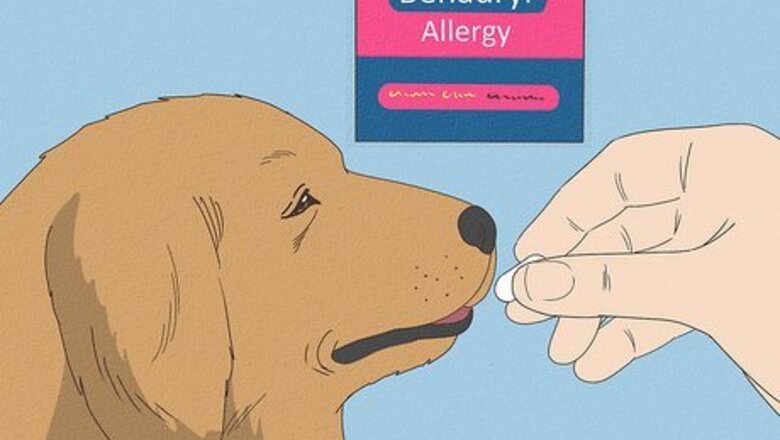
views
- Relieve allergic reactions with 2–4 milligrams of Benadryl per 2.2 pounds (1.00 kg) of your dog’s body weight.
- Treat itching temporarily by rubbing coconut oil, witch hazel, or mullein oil on itchy, irritated skin near your dog’s ears.
- Clean your dog’s inner ear with a cotton ball soaked in hydrogen peroxide. Wipe off the excess dirt and ear wax.
- Take your dog to a vet if you notice excessive itching, swelling, or open wounds to get treatment for ear mites or infections.
Immediate Itchy Ear Remedies
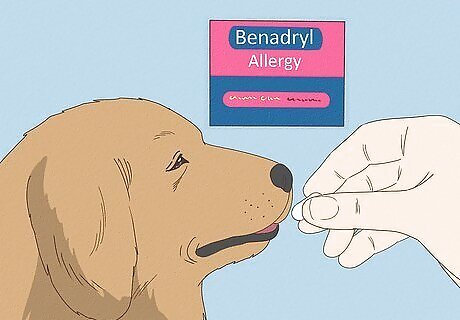
Give your dog an over-the-counter antihistamine for allergies. Use the same standard Benadryl pills that you would take when you have allergies. Measure out 2–4 milligrams of for every 2.2 pounds (1.00 kg) of your dog’s body weight, and give it to your dog with food. You can safely give Benadryl to your dog 2–3 times a day to help relieve their itchy ears. Talk to your vet before using an antihistamine if your dog is on other medications to make sure they won’t have any adverse reactions. Steer clear of liquid medication that contains sodium or time-release pills since they could cause other side effects. Avoid using Benadryl if you’re treating a puppy, pregnant dog, or nursing dog since they’re more sensitive to the medication. If your dog has a rapid heartbeat, dilated pupils, or seizures, contact your vet since your pup may have a Benadryl overdose.
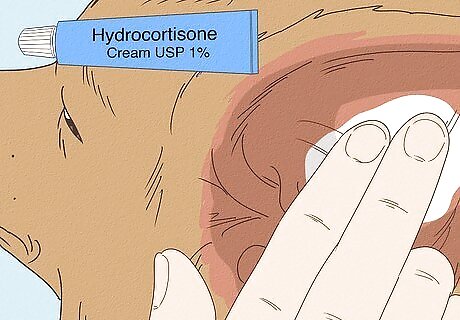
Rub 1% hydrocortisone cream into inflamed areas of your dog’s ear. Hydrocortisone can help relieve skin irritation and itching in your dog’s ears. Use any 1% over-the-counter cream you already have or get a special hydrocortisone spray made for dogs. Rub a fingertip-sized amount of the cream on the irritated skin to soothe your pup’s itchiness. Reapply hydrocortisone 3–4 times a day to help make your dog feel comfortable.
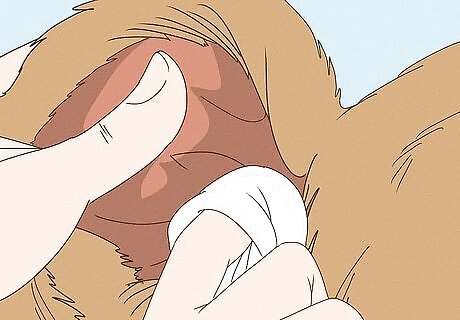
Clean your dog’s ears. Your pup may be scratching their ears if they have a lot of wax or buildup. Start by wetting a cotton ball with hydrogen peroxide or a liquid ear cleaner and rubbing away any dirt or debris under their ear. Gently lift away the wax and buildup instead of rubbing it deeper into your dog’s skin. Ask your vet for advice on how to properly clean your dog’s ears so they don’t get injured or stressed out. Avoid letting the hydrogen peroxide or ear cleaner drip inside your dog’s ear canal since it could cause more irritation.
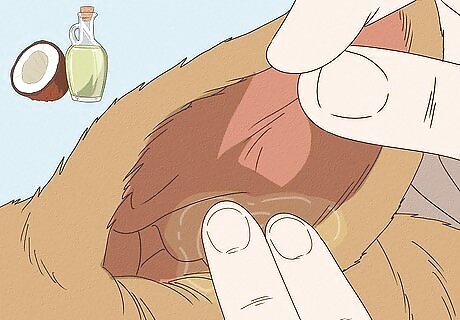
Apply coconut oil for temporary relief. Dip the end of a cotton swab into your coconut oil and gently rub it around your dog’s ear. Even though coconut oil won’t solve the underlying issue that’s making your dog’s ears itchy, they’ll stop scratching for a little while. Avoid using tea tree oil on your dog since it’s potentially toxic if they ingest it.
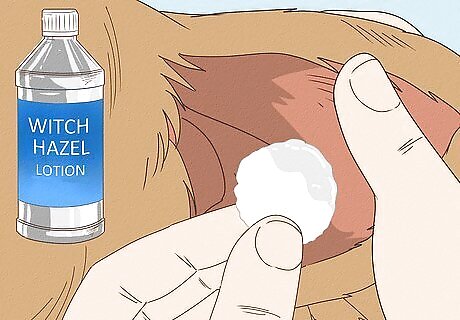
Try applying witch hazel or mullein oil on your dog’s ears. Witch hazel and mullein oil are both herbal home remedies that can reduce irritation that causes itching around your dog’s ears. Partially wet a cotton ball with either the witch hazel or mullein oil, and gently rub it around your dog’s outer ear where you see any inflammation to help soothe their skin. Reapply witch hazel or mullein oil twice a day to treat your dog’s itchy ears. Avoid soaking the cotton ball with witch hazel or mullein oil so it doesn’t drip into your dog’s inner ear. Liquid trapped in your pup’s ear could cause some irritation.
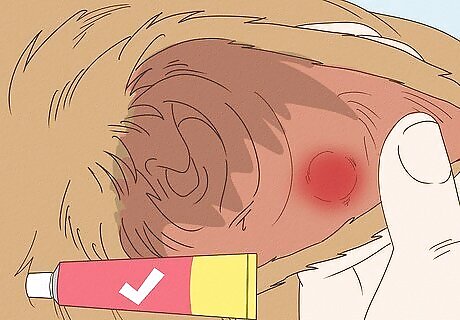
Get a prescription from your vet for severe or chronic itching. Whenever home remedies aren’t effective or you aren’t sure what’s causing your pup to scratch so much, take them to the vet to diagnose the problem. You may need to give your dog an oral antibiotic or apply ear medication to help your dog fully heal. Your vet may also prescribe a temporary corticosteroid ointment to apply while stronger medication kicks in and fights against an infection. If you see noticeable inflammation, bad odors, or swelling, it could be a sign your pup has a deeper ear infection. If your vet gives your dog a prescription, make sure you follow the dosing instructions properly. If you miss a dose, the infection could potentially come back. Your vet can also help clean your dog’s ears or remove any obstructions that got inside their ear canal.
Diagnosing Itchy Ears
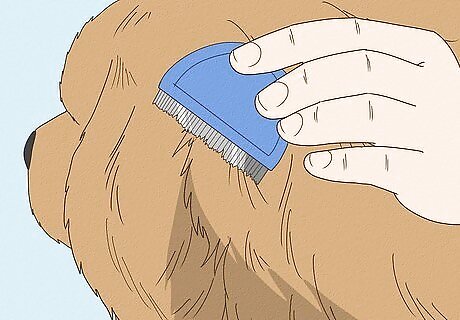
Comb around your dog’s ears to check for fleas. Fleas love to hide where your dog can’t reach them easily, so they could be biting near your dog’s ears. Get a flea comb with tightly-spaced teeth. Use your flea comb by running it through your pup’s fur around the base of their ears. If you find any fleas or black specks of “flea dirt,” then they’re likely what’s making your pup itch. Get rid of fleas as soon as you can to prevent them from spreading around your home or to other pets.
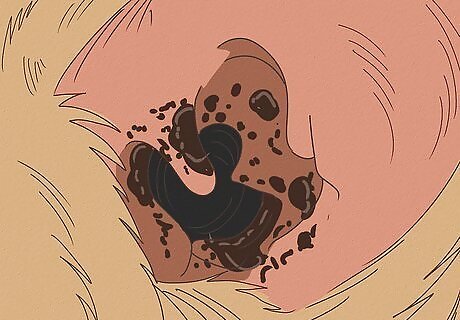
Inspect your dog’s ears for brown discharge to diagnose mites. Ear mites are really small pests that eat wax and oils in your dog’s ear canal. Lift up your dog’s ears and look inside for brown discharge that looks similar to coffee grounds. You won’t be able to see the actual mites themselves, but you may notice other inflammation and wounds from where your dog has been scratching. Treat ear mites as soon as possible since they could spread to other pets or even other parts of your dog’s body.
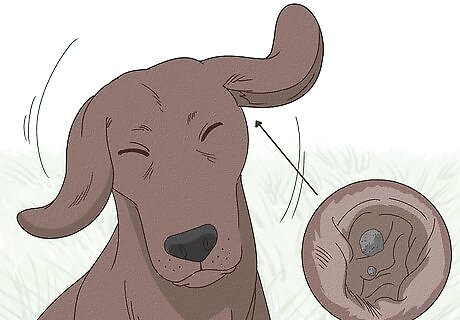
Check for obstructions in your dog’s ears if they’re shaking their head. If your dog suddenly is shaking their head or scratching after a walk or playtime, then there’s a chance something got in their ear. Try lifting up your dog’s ear and checking for any visible obstructions. If you can’t see anything, then the obstruction may have gotten deeper in your dog’s ear canal, so you may need to contact a vet to remove any foreign bodies. Foxtail, ticks, insects, and pebbles are all common obstructions that could make your pup feel itchy and uncomfortable.
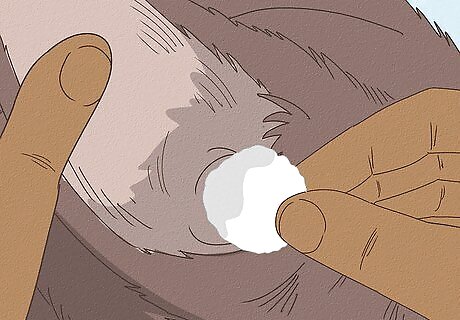
Treat an ear infection if there’s discharge, swelling, or ear odors. Other symptoms your dog may have include open sores from scratching, keeping their head tilted to one side, or excessive vocalization or discomfort. If you notice that your pup is dealing with any of these common symptoms, talk to your vet so they can properly determine the right treatment, which could include medication and regular cleaning. Leaving an ear infection untreated could cause it to spread or become more severe.
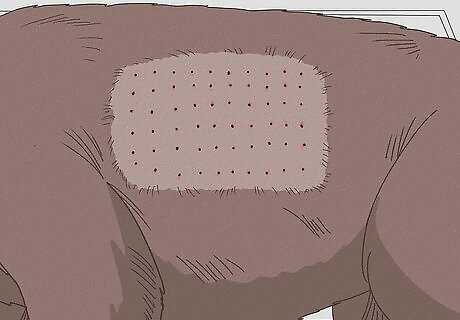
Get your dog tested for food or environmental allergies. Your dog may be allergic to something in their environment, like pollen or dust mites, or an ingredient in their food. Ask your vet to run allergy tests on your dog to determine if something is irritating their skin and making them itch. Once your vet figures out what your dog is allergic to, then you can treat the allergies with lifestyle changes and medication. Environmental allergies are usually seasonal and make your dog itch during certain times of the year. If you suspect your dog has a food allergy, try switching them to different food. Keep track of how much they scratch their ears over the next few weeks to see if there are any noticeable changes.
Prevention
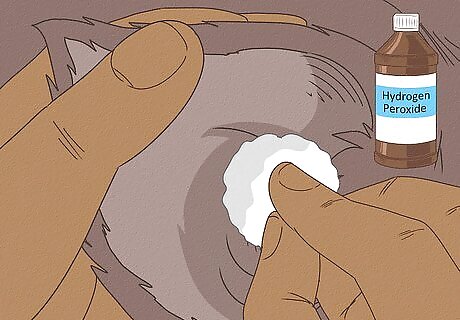
Inspect and clean your dog’s ears about once a month. Whenever you groom your dog, lift up their ears and look for any wax or buildup. Use a cotton ball soaked in hydrogen peroxide to gently wipe up the wax and debris so it doesn’t build up and lead to an infection. If you are unsure if your dog has an ear infection, compare one ear with the other to see if they both look the same. If one ear looks different or irritated, it's likely infected.
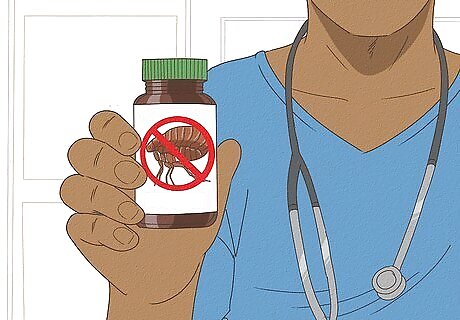
Treat your dog for fleas and mites year-round. Put your pup on a preventative treatment to stop fleas from getting on your dog. The treatment will help kill any adult fleas and stop flea eggs from hatching. Talk to your vet about the best flea control products to use since they may vary based on your dog’s size and breed. Ask them about preventative washes you can use on your dog to take care of those pesky ear mites as well.
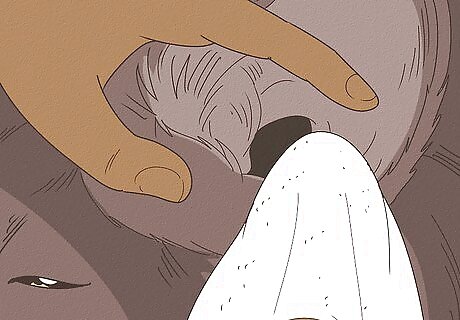
Dry your dog’s ears after they get wet. Water can easily get stuck in your dog’s ear canal, which could increase the risk of itchiness and infection. After your dog gets out of the water, gently lift their ear and pat it dry with a towel or cotton ball to prevent bacteria or yeast from growing. Dogs with droopy ears, like Labradors and golden retrievers, are more prone to water getting caught inside.
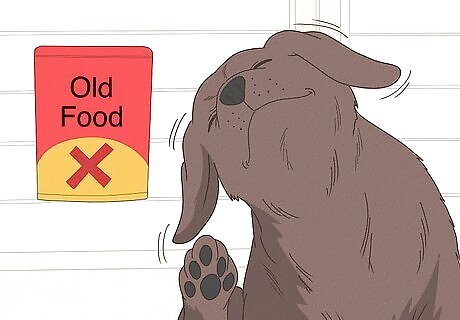
Change your dog’s diet if they have a food allergy. Try switching out your dog’s old food for one with different sources of protein and carbs. As your dog gets used to its new food, pay attention to how often they’re scratching their ears to see if they’re having an allergic reaction. If your dog stops scratching after about 12 weeks on their new diet, then it’s a sign they were allergic to something in their old food. If your dog is still scratching, then they may have environmental allergies or still be affected by another ingredient in their food.



















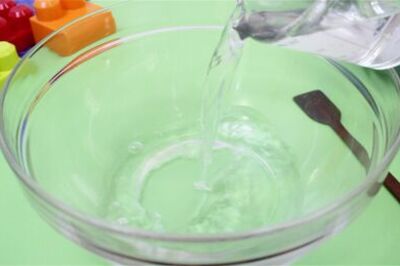
Comments
0 comment